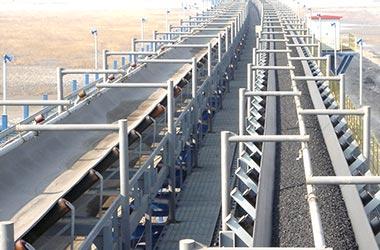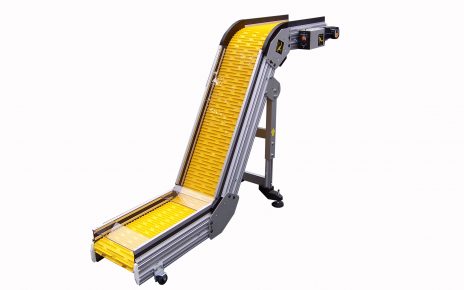Conveyor rollers are physical devices utilised to move things around an area with only the minimum energy and effort. These devices normally contain frames with built in rollers, but can also also employ small wheels or belts. They can either be electric motor powered or rely upon manual force.
Rollers are usually employed to transport bulk elements, and there are many different different kinds of rollers for specific roles. Rollers and other conveyors have the ability to lift product, use vibratory movement to transport products, and hang from above. Various other major types include screw conveyors, chute conveyors and tow conveyors.
Lets take a closer look at some of the main types of conveyor.
The Roller Conveyor – From Powered To Driven And Belt To Belt-less Magnetic Rollers
These are handling strategies which use rollers mounted in frames to transfer product. The factors you’ll want to think about will be the load capability and diameter, as well as the conveyor length and width. Roller conveyors are usually employed in holding areas for instance loading docks, travel luggage handling or assembly lines. Rollers use gravitational forces or manual power to transport goods around and can be straight or curled dependant on space or working environment.
Powered roller conveyors use powered rollers secured in frames to move merchandise and objects about. The key consideration is the sort of drive that you require. The primary drive varieties include belts, chains and motors. Powered roller conveyors have a lot of uses, including food handling, packaging and many other construction line companies.
Wheel conveyors use unpowered wheels to transfer products, either by gravity or manual power. If selecting a wheel system, you’ll want to think about load total capacity, the actual length and width and the electric requirements. Wheel conveyors are commonly used in loading and unloading commercial transport, in addition to relocating big weighty items which includes pallets. Depending on the load requirements, wheel numbers and spacing may differ.
Vibrating conveyors use rotary or linear vibration to safely move commodities or materials along. They may be commonly used to move bulk materials like gravel and coal. Depending on the required use, many sizes are available.
Overhead conveyors are installed to roofs and make use of carts moved by chains, cables or other connections. They are usually utilised in industrial sectors where the merchandise has to be suspended, which includes parts handling systems, or for cooling needs. With regards to the supposed use of the overhead platform, the load carrying total capacity can be quite critical. Many systems are motorised although you can find the ones are hand operated.
Belt conveyors use continuous belts to manoeuvre merchandise. There’re frequently used in food suppliers, for baggage handling, in packing and shipping and in the mailing service, even if you would most frequently connect them with the cash registers in shops. Belt conveyors are generally motorised and operate at several rates of speed. Belts might be driven horizontally or maybe at slope inclines.
Beltless magnetic conveyors make use of moving magnets beneath immobile plates to manoeuvre magnetic or ferrous substances. This may be comprising scrap steel or machine parts. Beltless magnetic conveyors can be flat, vertical or a combination of the two.
The Role Of Conveyor Rollers
Your decision concerning conveyor system varies according to the item type, speed, distance off the ground and segment focus particular for your business. Numerous styles of conveyor, for example , belts and vibrating units, could be used over long distances in businesses such as mining and raw materials. Nonetheless, a vibrating belt system can be of little use in food production or consumer electronics industries.
Conveyors can be hand operated, which is when products are moved along manually over the rollers or wheels. Others are air powered or engine powered. Normally, however, they are driven by electrical engines. This either takes place directly or through reduction gears, chains and sprockets.
Materials and products are ordinarily moved on the top surfaces of conveyors, but overhead conveyors will be the obvious exception.
How To Choose A Conveyor Roller
If you’re needing to move products easily and with hardly any time and effort and the highest level of health and safety, you need to examine your needs and requirements conscientiously. Your eventual conclusion will be contingent upon the industry in which you operate, the option for power source (or not) together with the spending budget that you may have.
Conveyor rollers are perhaps the simplest and adaptive system and also one of the most inexpensive. Roller systems are also user-friendly and uncomplicated and maintain and can be tailored to a wide array of business sectors and uses. Systems can be custom-designed to for your available space and rollers can be selected by materials, weight capacity, velocity and more. This is why conveyor rollers are some of the most widely used choices for UK organisations.
Go here for further details www.conveyorrollers.co.uk
Roller conveyor platforms can be custom-designed from modular components. These include straight sections, bends, transitions, merges, dividers plus much more. Designers will give design knowledge and installing the components assistance, assisting you to get the absolute best platform for your need. They can also offer you on-going routine maintenance support and spares to help keep your items and your business moving.
If it’s time you expanded your organisation and you aspire to improve production, storage, shipping and delivery or more, then a conveyor roller system may just be just what you’ve been searching for.




